Can indoor cats get fleas?
The simple answer is yes, indoor cats can get fleas!
It’s a very common misconception that indoor-only cats can’t pick up fleas and it can be a nasty shock when an infestation strikes.
The truth is that all cats are at risk of picking up parasites including intestinal worms and fleas whether they spend their days rummaging through the undergrowth or lounging on the sofa. While strictly indoor cats are at lower risk of parasites than their outdoor counterparts, it’s still important to protect your pet against these troublesome critters.
So, how do indoor cats get fleas and how can you stop it happening? Read on to find out more.
How do indoor cats get fleas?
Indoor cats get fleas via several potential flea transmitters!
1: Other pets

At the top of the list of culprits are other family pets. Your dog or other cats could bring fleas into the house; once indoors, these fleas lay eggs which fall off the pet and onto your soft furnishings. When they hatch, these jump onto the indoor pet cat and start feeding. Check all pets for fleas by grooming with a flea comb and gently parting the fur to look for the tell-tale signs of bites, flea dirt or the fleas themselves.
This means visiting pets are a risk too. Make sure to check visitors’ pets are protected with a preventative flea treatment before letting them into your home, and after a visit, put pet bedding and blankets on a hot wash cycle to kill any fleas and their eggs.
2: Humans
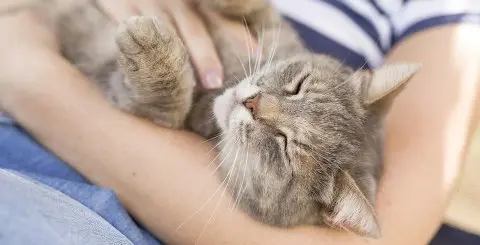
While the common cat flea prefers fluffy hosts, they will happily bite humans and hitch a ride on our clothes and shoes. Once a preferable victim is nearby, fleas will easily jump more than 100 times their own length to transfer from person to pet.
OK, so it’s not practical to check every person that comes into your home for fleas and ticks, but regularly cleaning your home, including vacuuming floors, carpets and upholstery, can help remove flea eggs and flea larvae that may have been brought in - but remember to clean out the vacuum afterwards!
3: Wild animals
An indoor cat isn’t going to be stalking prey through the wilds of the neighbours’ gardens, but you might be surprised to learn that they may get an opportunity to hunt in your home. Wild animals, particularly rodents, can make their way inside, particularly if you live in the countryside, have a garden, a cellar or an attic.
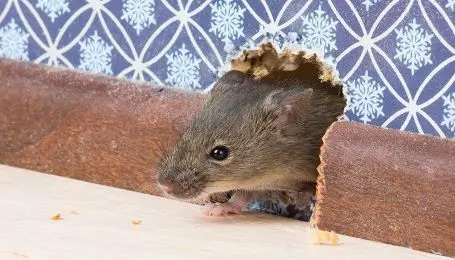
While these critters are unlikely to want to stay within claws reach of a healthy cat, rats and mice and the like are hotbeds for fleas. It’s certainly possible, especially if you end up with an infestation, that they can drop flea eggs in the home, which can then hatch and find their way to your cat.
Cats in themselves help discourage rodents, but you can help too by keeping your counters free of food and waste. If you think you may have a rodent infestation, you might find it helpful to consult a pest control expert.
4: Trips out
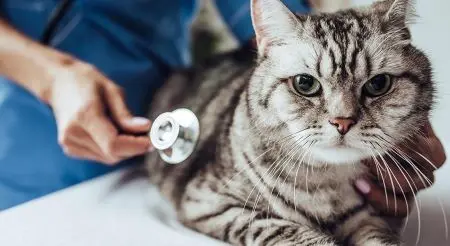
Sooner or later your indoor cat will become an outdoor cat, at least temporarily, such as when you need to take them to the vet, to the groomers or even a cat boarding facility or pet sitter. Here, they can come into contact with other animals and could potentially pick up fleas.
5: Second hand items
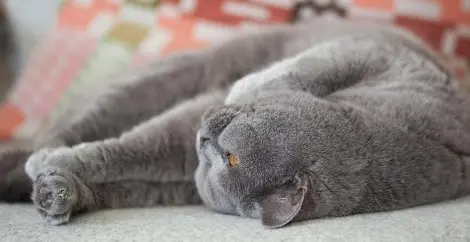
Pets love sleeping on our soft furnishings, whether that’s cosying up to us on the sofa or lolling across our cushions. The problem is, when a pet has fleas, large numbers of eggs can fall off their coat into the environment, especially in places they rest, sleep and play.
While your cat might not be infected, second-hand goods may be! Keep this in mind when bringing back bargains from charity shops, flea markets and even antique stores, and conduct a thorough clean. To kill any lurking flea eggs, any soft furnishing should be washed on a hot cycle and tumble dried if possible, and any non-washable items wiped down.
6: Moving into a new home
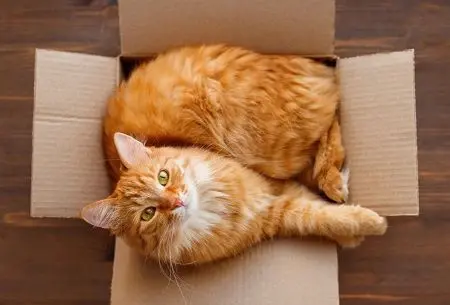
Just because the people and pets have moved out, doesn’t mean the fleas have. Flea pupae can lay dormant for months, ready and waiting for a host to arrive, triggering them to hatch out into adult fleas and feed!
Thanks to central heating, our homes stay warm and cosy year-round, providing the ideal temperature for fleas to thrive whether it’s summer or winter.
When you move to a new house, plan for the worst and hope for the best. You may want to consider cleaning your new home as though it has an infestation, especially if the previous owners had pets.
By now you’ve probably realised that fleas are crafty critters that can smuggle themselves into our homes in many surprising ways, from hitchhiking on unwanted rodents and visitors, to leaving dormant eggs in soft furnishings.
What’s more, don’t forget that indoor cats are never truly 100% indoors – vet, groomer and cattery trips are prime opportunities where your cat could be exposed to fleas! Fleas can cause all kinds of health problems and can be hard work to get rid of, so, no matter how much time your cat spends indoors, it’s important to be aware that fleas can still be a problem and that prevention can be needed.
Protecting indoor cats from fleas
If you're unsure if your indoor cat is at risk of fleas then speak to your vet. There are many different product options available, including:

Flea collars can vary in how they work; Seresto Flea and Tick Control collar for cats kills fleas (and repels and kills ticks) through contact without the need for them to bite your pet1. Just put it on your cat like a normal collar and with Seresto they’re protected for 7-8 months

Spot-on cat flea treatments, such as Advantage Spot-on, contain a small amount of liquid that is applied to the skin at the base of the cat's head once a month. Many pet owners find them convenient as they are easy to apply. Advantage Spot-on kills fleas within 24 hours and and prevents further infestations for 4 weeks. Fleas are killed through contact with the treated pet and do not have to bite to die1.

Tablets are another commonly used method to protect cats from fleas and can be given either by putting the tablet in with your pet's food or treats, or by gently giving it directly into their mouth. Speak with your vet about tablets for preventative flea control in cats. If your cat already has an infestation of fleas, one Capstar tablet starts killing adult fleas in just 15-30 minutes and lasts 24 hours; to prevent a re-infestation of fleas, you'll need to use a longer-acting preventative product afterwards too.
Flea Treatment Product Options for Cats
Whenever applying flea treatments, always make sure you read the label and consult your vet or local pet retail store if you’re unsure. They will be able to advise you on the best product and dose for your cat’s age and weight.
Responsible use of medicines in pets
When we use pet health treatments, be they for parasites or for other health issues, it's essential that they are used responsibly. Find out more about the principles of responsible use of medicines in pets.
Don’t forget about worms
Fleas can carry the tapeworm parasite, a nasty intestinal worm which can be transmitted to your cat if a flea is ingested, so it's important to worm alongside flea control for full coverage. Speak to your vet about treatment options and frequency.
- Mehlhorn et al. Parasitol Res (2001) 87:198-207, information is regarding mode of action and is not intended to relate to speed of kill or to imply parasites can be completely stopped from biting.
